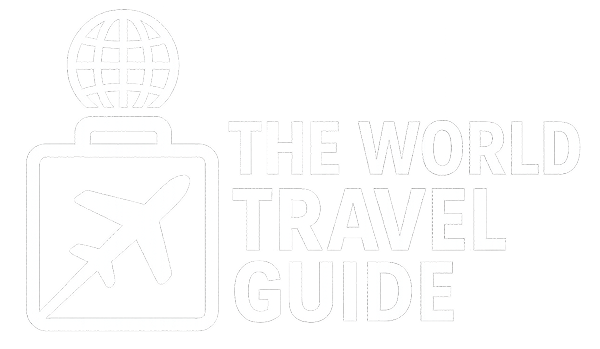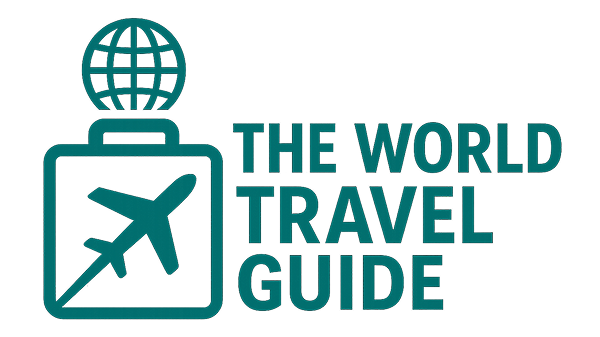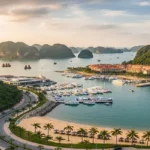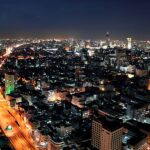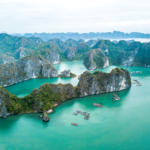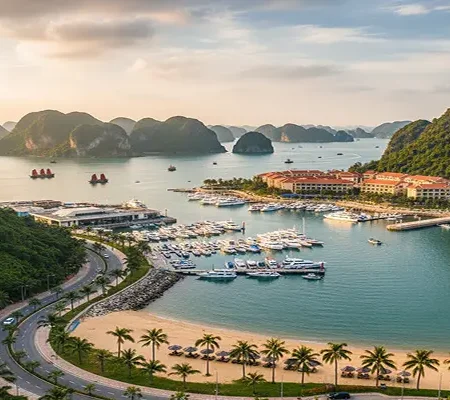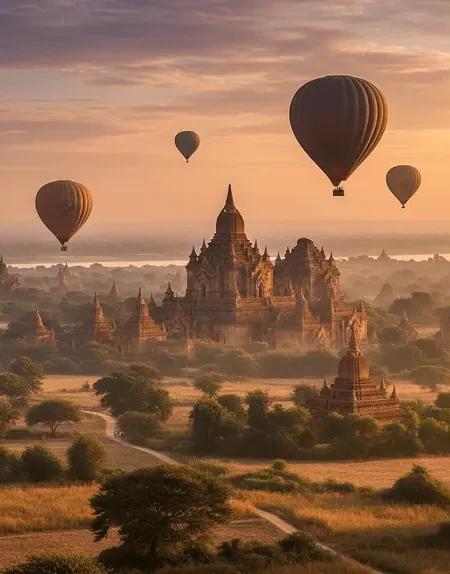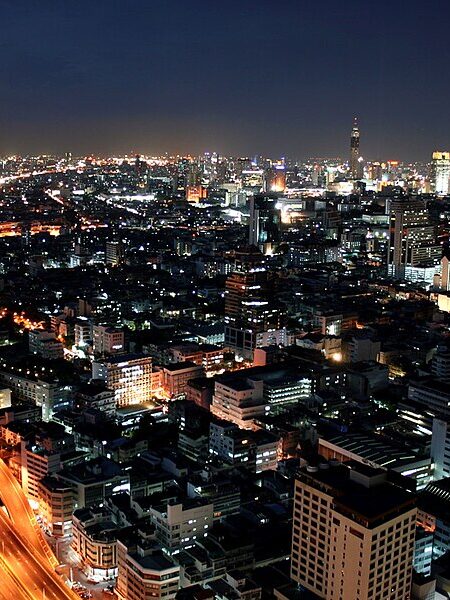Imagine stepping into a world painted in vibrant hues of crimson and gold, where the air hums with the gentle rustle of bamboo and the sweet, earthy scent of incense. Just a short journey from the bustling streets of Hanoi lies Quang Phu Cau Incense Village, a place where time seems to slow down, and age-old traditions thrive. This isn’t just a village; it’s a living canvas, a testament to generations of dedication to an art form that is deeply woven into the spiritual fabric of Vietnam.
For centuries, Quang Phu Cau has been the heartland of incense production, supplying countless homes, temples, and pagodas across the country with these aromatic sticks that carry prayers and intentions to the heavens. What began as a vital craft has evolved into a mesmerizing spectacle, especially during peak seasons when thousands of incense bundles are laid out to dry, creating breathtaking patterns that have become a magnet for photographers and cultural explorers alike.
While many might consider Quang Phu Cau a quick half-day visit, we believe this incredible village truly deserves more. To genuinely soak in its atmosphere, understand its rhythms, and capture its magic, a 2-day, 1-night adventure is ideal. This extended stay allows you to witness the village waking up, observe the meticulous crafting process, engage with friendly locals, and truly appreciate the artistry behind every fragrant stick. Join us as we guide you through an immersive journey into the heart of Quang Phu Cau.
1. Getting There: Your Journey to Quang Phu Cau
Quang Phu Cau Incense Village is conveniently located about 35-40 kilometers southwest of Hanoi, making it an accessible escape from the urban sprawl. Depending on your preference for comfort, cost, and adventure, several transportation options are available.
By Taxi/Grab
This is arguably the most convenient option, especially if you’re traveling with companions. A taxi or Grab (Southeast Asia’s popular ride-hailing app) will offer a direct, comfortable journey. The ride typically takes about 1 to 1.5 hours, depending on traffic.
Pros: Door-to-door service, comfortable, air-conditioned.
Cons: Most expensive option.
Tip: Negotiate the price beforehand if taking a traditional taxi, or use the in-app fare estimate for Grab.
By Private Car
For a more personalized experience, you can hire a private car with a driver for the day or for your entire 2-day trip. This provides flexibility to stop at other points of interest along the way and ensures a comfortable ride. Many tour operators in Hanoi can arrange this for you.
Pros: Highly flexible, comfortable, often includes an English-speaking driver.
Cons: Higher cost.
By Local Bus
For the budget-conscious and those seeking an authentic local experience, taking the public bus is an excellent choice.
Route: From Hanoi, you can catch bus number 91 from the Yen Nghia Bus Station (Bến xe Yên Nghĩa). The bus takes you directly to the Quang Phu Cau area.
Journey Time: Approximately 1.5 to 2 hours.
Cost: Very affordable.
Pros: Cheapest option, authentic local experience.
Cons: Can be crowded, less comfortable, requires navigating public transport.
Tip: Be prepared for limited English. Having your destination written in Vietnamese will be helpful. (Làng hương Quảng Phú Cầu)
Motorbike Adventure
If you’re an experienced rider and love the open road, renting a motorbike offers the ultimate freedom. The ride through the Vietnamese countryside is scenic and allows you to explore at your own pace.
Pros: Complete freedom, adventurous, scenic ride.
Cons: Can be risky if you’re not an experienced rider, requires navigating.
Tip: Ensure you have an international driving permit and good travel insurance. Always wear a helmet.
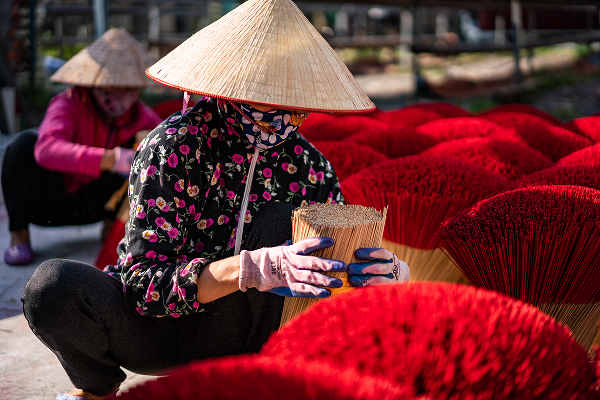
2. Where to Stay: Immersing Yourself in Local Life
While many visit Quang Phu Cau as a day trip, staying overnight truly enhances the experience. It allows you to witness the village at different times of the day, observe the morning rituals, and escape the crowds that sometimes arrive later in the day.
Homestays in Quang Phu Cau
Staying in a local homestay is highly recommended for an immersive experience. While not as plentiful as in more established tourist areas, a few families in Quang Phu Cau or nearby hamlets offer rooms. This provides an incredible opportunity to interact with local families, savor home-cooked Vietnamese meals, and gain deeper insights into their daily lives and the incense-making craft.
Pros: Authentic cultural immersion, local insights, support local families.
Cons: Limited availability, basic amenities, communication might be a challenge (though gestures and translation apps go a long way!).
Tip: Inquire locally upon arrival or ask your private driver/tour guide if they know of any reputable homestays. Online booking platforms might have limited options for this specific village.
Hotels in Nearby Areas (e.g., Van Dinh town)
If a homestay isn’t your preference or you’re looking for slightly more amenities, the nearby town of Van Dinh (about 10-15 km from Quang Phu Cau) offers a few guesthouses and small hotels. These will provide more standard accommodation options, though they will be less about direct village immersion.
Pros: More conventional amenities, easier to book online.
Cons: Requires a short commute to and from Quang Phu Cau.
Considering a Return to Hanoi
Of course, if you prioritize comfort and a wider range of dining and entertainment options, you can always return to Hanoi for the night. This negates the full “2-day, 1-night” immersive experience, but it’s a perfectly valid choice for those who prefer urban accommodation. Just remember to factor in travel time and costs for two round trips.
3. Day 1: Arrival & First Impressions
Your first day is all about easing into the village’s unique rhythm and soaking in the visual spectacle.
Morning: The Grand Welcome
Upon arrival, you’ll immediately be struck by the sheer vibrancy of the place. The main drying yards are often the first stop, where thousands of incense sticks, dyed a brilliant red, are bundled together and fanned out like giant floral bouquets under the sun. This is where most of the iconic photographs are taken. Take your time to walk around, admire the patterns, and feel the gentle breeze carrying the scent of agarwood and cinnamon.
Activity: Photography, gentle exploration of the main drying areas.
Tip: Respect the workers. These are their livelihoods. Always ask for permission if you want to take a close-up photo of someone working. A friendly smile and a gesture with your camera are usually enough.
Afternoon: Exploring the Heart of the Village
Venture beyond the main photo spots. Wander through the narrower lanes and residential areas. You’ll see homes with incense sticks drying in smaller quantities in courtyards, stacks of bamboo, and bundles of fragrant wood chips. This is where you get a glimpse into the everyday life of the villagers. You might stumble upon small family workshops where various stages of the incense-making process are underway. Look for the raw materials being prepared, the dipping of the bamboo sticks, and the final packaging.
Activity: Walking tour, observing daily life, visiting smaller workshops.
Internal Link: For more on traditional Vietnamese crafts, check out our guide to “Exploring Vietnam’s Artisan Villages.”
Evening: Savoring Local Flavors
As dusk settles, the village takes on a quieter, more reflective ambiance. This is the perfect time to enjoy a simple, authentic Vietnamese dinner. If you’re staying in a homestay, you’ll likely be treated to a delicious home-cooked meal. Otherwise, look for small local eateries offering traditional dishes like phở, bún chả, or regional specialties. It’s a chance to unwind, reflect on the day’s discoveries, and engage in conversation with your hosts or fellow travelers.
Activity: Dinner, relaxing, experiencing local nightlife (which is very subdued here).
External Link: Learn more about “The Flavors of Northern Vietnamese Cuisine” to enhance your dining experience.
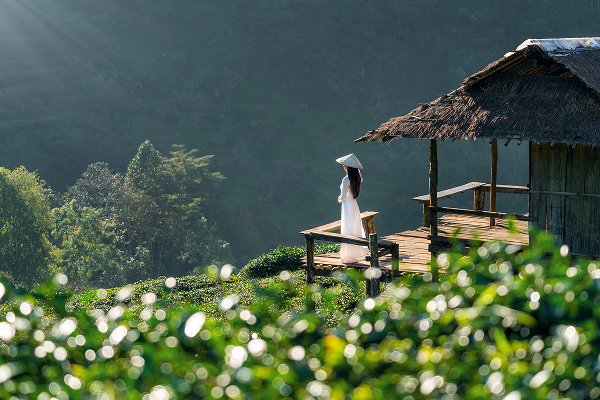
4. Day 2: Deep Dive into the Craft & Farewell
Day two offers a chance to delve deeper into the craft and witness the village come alive with activity before bidding farewell.
Morning: Witnessing the Incense Making Process
This is the highlight for anyone truly interested in the craft. Wake up early to see the village slowly come to life. Many workshops start their day well before sunrise. You might see families preparing the raw materials, splitting bamboo, grinding fragrant wood into powder, and meticulously dipping the bamboo sticks into the paste. This labor-intensive process is fascinating to observe, showcasing the skill and dedication of the artisans. Ask your homestay host or a local guide if they can introduce you to a workshop where you can watch the different stages.
Activity: Observing incense production, interacting with artisans.
Tip: Be respectful of the working environment. Avoid interrupting their flow and always ask permission before entering private workshops.
Afternoon: Capturing the Golden Hour & Departure
Depending on your schedule, you might want to revisit the main drying yards during the mid-morning or early afternoon for a different light. If you missed any photo opportunities or simply want to re-experience the visual feast, now’s your chance. Before you leave, consider purchasing some incense directly from the villagers. Not only does it make for a meaningful souvenir, but it also directly supports the local economy and the preservation of this traditional craft.
Activity: Final photography, souvenir shopping, departure.
Tip: Many villagers appreciate a small purchase, even if it’s just a few bundles of incense. It’s a nice way to show your appreciation for their hospitality and the cultural experience.
5. Photography Tips for Quang Phu Cau
Quang Phu Cau is a photographer’s dream! To make the most of your visual journey:
Best Time to Visit for Photos
Dry Season (October to April): This is ideal as the incense needs plenty of sun to dry. More incense will be laid out.
Early Morning (before 9 AM) & Late Afternoon (3 PM onwards): These “golden hours” offer soft, warm light that beautifully illuminates the red incense bundles, creating stunning contrasts and long shadows. The crowds are also thinner.
Before Tet (Vietnamese Lunar New Year): Production ramps up significantly in the months leading up to Tet (usually late January or February), resulting in an even more spectacular display of drying incense.
Respectful Photography
Remember that this is a working village.
Always ask for permission before taking close-up photos of individuals, especially children.
Be mindful of your surroundings and avoid stepping on or damaging the incense.
A polite nod, a smile, or a simple “Xin chào” (hello) goes a long way.
Composition & Angles
Look for patterns: The bundles create incredible geometric and organic patterns.
Use leading lines: The rows of incense can draw the viewer’s eye into your shot.
Get low: Shooting from a lower angle can make the incense bundles appear grander and more immersive.
Look for contrast: The vibrant red against the blue sky, or the green of the fields.
Include people: Human elements add scale and context to your photos, showcasing the human aspect of the craft.
Try drone shots: If you have a drone, the aerial views of the drying yards are simply breathtaking and offer a unique perspective.
6. Essential Tips for Your Visit
A few pointers to ensure a smooth and enjoyable trip:
Dress Code
Dress comfortably and respectfully. Light, breathable clothing is ideal, especially during warmer months. While there’s no strict dress code, avoiding overly revealing attire is always a good practice in rural Vietnamese villages.
Language Barrier
Vietnamese is the primary language. While some younger villagers might know basic English, it’s not common. A translation app on your phone will be incredibly helpful. Learning a few basic Vietnamese phrases like “hello” (Xin chào), “thank you” (Cảm ơn), and “how much?” (Bao nhiêu?) will be greatly appreciated.
Local Etiquette
Smile often: A warm smile is universally understood.
Remove shoes: If invited into a home or workshop, remove your shoes before entering.
Use both hands: When giving or receiving something, especially money or gifts, use both hands as a sign of respect.
Purchasing Incense
If you wish to buy incense, purchase directly from the villagers. This supports their livelihood and allows you to take home an authentic piece of Quang Phu Cau. Prices are generally very reasonable.
7. Quang Phu Cau FAQs
Q1: What is the best time of year to visit Quang Phu Cau Incense Village?
A1: The dry season, from October to April, is ideal as more incense will be laid out to dry under the sun. Visiting in the months leading up to Tet (Vietnamese Lunar New Year, usually late January or February) is particularly spectacular due to increased production.
Q2: Is Quang Phu Cau suitable for a day trip from Hanoi?
A2: Yes, it’s a popular day trip, but for a truly immersive experience and better photography opportunities, a 2-day, 1-night stay is recommended.
Q3: How much does it cost to enter Quang Phu Cau Incense Village?
A3: There is typically no official entrance fee to the village itself. However, some larger drying yards that have become popular photography spots might ask for a small donation or fee (usually 50,000-100,000 VND, or about $2-4 USD) to help maintain the area and manage visitors.
Q4: Can I take photos of the villagers working?
A4: It’s important to be respectful. Always ask for permission (a smile and a gesture with your camera often work) before taking close-up photos of individuals. Many are accustomed to tourists and are happy to pose or be photographed while working.
Q5: What else can I do near Quang Phu Cau?
A5: While Quang Phu Cau is the main attraction, you could combine your trip with a visit to the Perfume Pagoda (Chùa Hương), a vast complex of Buddhist temples and shrines built into the Huong Tich mountains, though this would likely require more than a 2-day, 1-night trip. Another option could be exploring the nearby rural landscapes.
Q6: What should I wear when visiting the village?
A6: Light, comfortable, and respectful clothing is recommended. Shoulders and knees don’t necessarily need to be covered, but avoiding overly revealing attire is a good general practice in rural areas.
Q7: Is there food available in Quang Phu Cau?
A7: Yes, there are small local eateries and street food vendors offering traditional Vietnamese dishes. If you’re staying in a homestay, home-cooked meals are often part of the experience.
